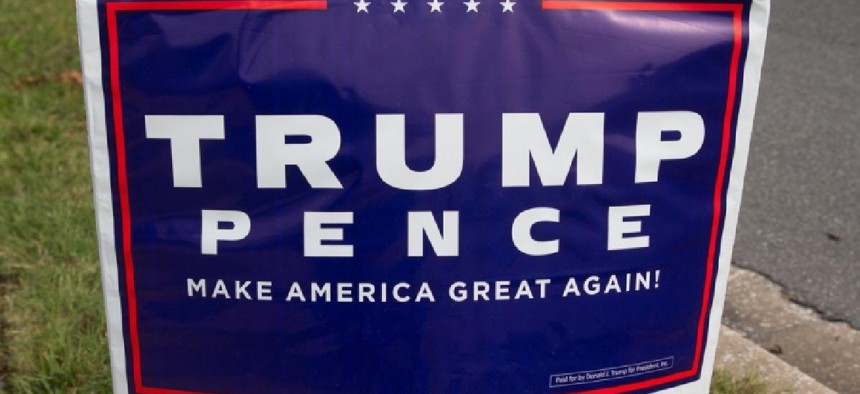Elections (Archived)
The signs for a PA Trump victory were visible … if you looked right

Yard signs like these were found all over the parts of PA won by Trump – Rob Wilson/Shutterstock
The signs were there – both in the data and anecdotally – that forecast the stunning outcome of last week’s presidential election. Many polls failed to capture the enthusiasm gap between Trump voters and Clinton voters, which contributed to Trump’s victory in Pennsylvania. My firm, Harper Polling, did not: we correctly forecast a dead heat in Pennsylvania when our final public poll from Nov. 2-3 showed a 46-46 percent tie between Clinton and Trump. Based on our final analysis, here are the reasons Pennsylvanians voted the way they did.
It was a movement for Trump voters
Most polls attempt to gauge the enthusiasm of voters by simply asking them how likely they are to vote in the election or asking them to rate their interest in the election on a scale of 1 to 10. These conventional approaches were not sufficient.Our final survey of the presidential race in Pennsylvania added a second element to this, by putting voter sentiment about the race into plain language. Did voters view the last days of the race as: a) “complete torture, b) “a train wreck,” or c) “the most exciting election in years. I’m part of a movement.” Trump voters were more than three times as likely as Clinton voters to say “This is the most exciting election in years. I’m part of a movement” (30-9 percent). Similarly, there was evidence that Trump had mobilized base voters as Republicans were about twice as likely as Democrats to say they were part of a movement (26-14 percent). Conversely, Hillary Clinton’s voters were more pessimistic in their opinions about the race, with a plurality characterizing the election as “a train wreck” (42 percent).
This overarching dynamic of a Trump movement is reflected in three crucial regional trends.
- Trump runs up the score with his base voters; Clinton underperforms with hers
As Election Day neared, Donald Trump expanded his support in the regional Republican strongholds of South Central Pennsylvania and the Northern Tier. Conversely, Clinton was stagnant in the Democratic-friendly Philadelphia and the Southeast, and ultimately underperformed Obama’s 2012 margin of victory by 9 percent in this critical region. Trump capitalized on his ability to mobilize base Republican voters, who were twice as likely as Democrats to feel that they were part of a movement.
- Trump wins on Democratic turf in Scranton/Lehigh Valley
Trump posted a solid lead in Scranton and the Lehigh Valley region of the state. Again, he was able to ride the wave of enthusiasm for his candidacy and populist message to a lead in a typically blue area. For context, in 2012 President Obama won this region by 8 percent. According to official results, Hillary Clinton lost by 6 percent.
- Pittsburgh/Southwest Swings Toward Trump
In late September, our polling showed Hillary Clinton with a small advantage over Donald Trump in the Pittsburgh and Southwest region of the state (47-44 percent). In our final pre-election survey, Trump turned a 3 percent deficit into a 6 percent lead over Clinton in the region (49-43; he ultimately won by 6 percent). This shift in candidate preference was a glaring sign of momentum for Donald Trump, further augmented by the evidence of an enthusiasm gap in his favor.
A close examination of the data can answer questions about what led to the most shocking outcome of a presidential election in modern history. Sometimes, though, the data only reinforces what is evident with our own eyes. The higher levels of enthusiasm for Trump – as evidenced by packed campaign rallies, scores of first-time voters among our friends and family, and the state being wallpapered with Trump yard signs – were all indicators that fancy political forecasting failed to account for.
Brock McCleary is the founder of Harper Polling, a national polling and research firm based in Pennsylvania.
